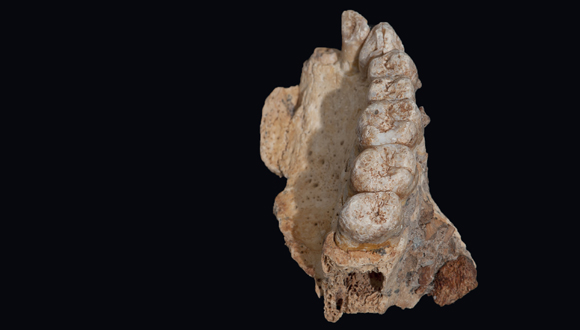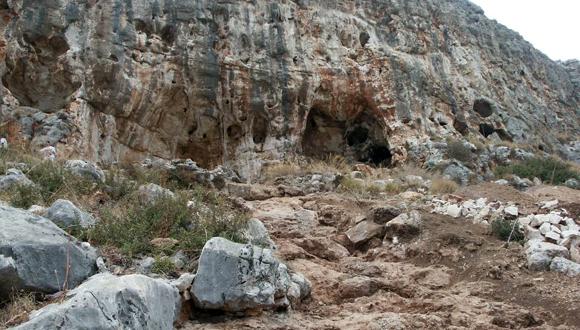Remains of earliest modern human outside of Africa discovered
Discovery of jawbone pushes back history of Homo sapiens migration by at least 50,000 years
A jawbone complete with teeth recently discovered at Israel's Misliya cave has now been dated to 177,000-194,000 years ago. The finding indicates that modern humans were present in the Levant at least 50,000 years earlier than previously thought.
"This finding — that early modern humans were present outside of Africa earlier than commonly believed — completely changes our view on modern human dispersal and the history of modern human evolution," says Prof. Israel Hershkovitz of the Department of Anatomy and Anthropology at Tel Aviv University's Sackler Faculty of Medicine. Prof. Hershkovitz led the international team of anthropologists who conducted the study in collaboration with Prof. Mina Weinstein-Evron of the Zinman Institute of Archaeology at the University of Haifa. The research was recently published in the journal Science.
The common consensus of anthropologists has been that modern humans appeared in Africa roughly 160,000-200,000 years ago, based on fossils found in Ethiopia, and that modern humans evolved in Africa and started migrating out of Africa around 100,000 years ago.
The research team discovered the fossil, an adult upper jawbone with several teeth, at the Misliya cave in Israel, one of several prehistoric cave sites located on Mount Carmel. The scientists applied various dating techniques to the fossil to determine that the jawbone is at least 170,000 years old. They also analyzed the remains using microCT scans and 3D virtual models to compare it with other hominin fossils discovered in parts of Africa, Europe and Asia.

The maxilla (upper jaw) of Misliya-1 hominin. (photo: Israel Hershkovitz, Tel Aviv University)
Turning back the clock
"But if the fossil at Misliya dates to roughly 170,000-190,000 years ago, the entire narrative of the evolution of Homo sapiens must be pushed back by at least 100,000-200,000 years," Prof. Hershkovitz says. "In other words, if modern humans started traveling out of Africa some 200,000 years ago, it follows that they must have originated in Africa at least 300,000-500,000 years ago."
Until now, the earliest remains of modern human found outside of Africa, at the Skhul and Qafzeh caves in Israel, were dated to 90,000-120,000 years ago.
"Our research makes sense of many recent anthropological and genetic finds,” says Prof. Hershkovitz, who heads the Dan David Center for Human Evolution and Biohistory Research at TAU's Steinhardt Museum of Natural History. “About a year ago, scientists reported finding the remains of modern humans in China dating to about 80,000-100,000 years ago. This suggested that their migration occurred earlier than previously thought, but until our discovery at Misliya, we could not explain it.
"Numerous different pieces of the puzzle — the occurrence of the earliest modern human in Misliya, evidence of genetic mixture between Neanderthals and humans, modern humans in China — now fall into place," he observes.
The Middle East was a major corridor for hominin migrations, occupied at different times by both modern humans and Neanderthals. The new discovery at Misliya suggests an earlier demographic replacement or genetic admixture with local populations than previously thought.
"All of the anatomical details in the Misliya fossil are fully consistent with modern humans, but some features resemble those found in the remains of Neanderthals and other human groups. This suggests that, while Africa was the origin of our species, some of our traits must have evolved or been acquired outside of Africa," says Prof. Hershkovitz, whose research is also supported by TAU's Shmunis Family Anthropology Institute, which he heads.
According to Prof. Weinstein-Evron, the inhabitants of Misliya cave were capable hunters of large game species such as aurochs, Persian fallow deer and gazelles, routinely used fire, made a wide use of plants and produced an Early Middle Paleolithic stone tool kit, employing sophisticated innovative techniques, similar to those found with the earliest modern humans in Africa. The association of the Misliya maxilla with such evolved technologies in the Levant suggests that their emergence is linked to the appearance of Homo sapiens in the region.






